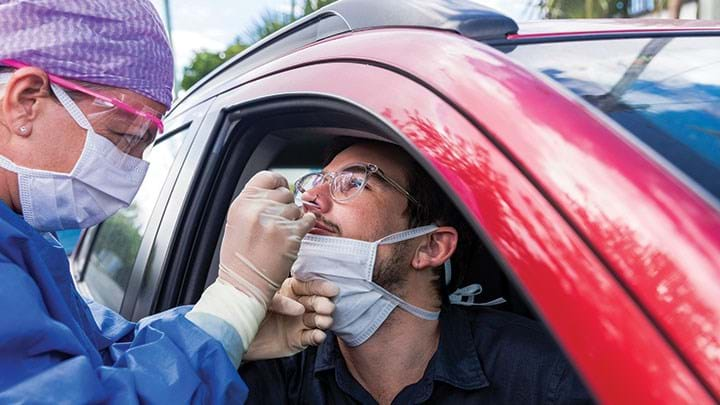The diagnostics challenge

IT was the World Health Organization that urged countries to “Test, test, test” to help control the spread of Covid-19. Testing provides the essential information needed for key decisions such as when to relax lockdowns, but many countries including the UK are struggling with a shortage of diagnostics capacity.
There is a need to scale up the production and use of two types of test. Firstly, real-time reverse transcription polymerase chain reaction (RT-PCR) detects virus on swabs to check if a patient is infected now. Then there are antibody tests that show recent or past infection. Both have common challenges involving complex supply chains and stringent regulations.
Fortunately, many of us within the chemical engineering, biochemical engineering, and bioprocess community have vital expertise to contribute. This presents some obvious, and some perhaps more surprising opportunities.
Supply chains and regulations
We’ve heard reports that there are shortages of the specialist chemicals and biochemicals needed for diagnostics. This has included polymerases, lysis buffer, the specific mixes provided by major manufacturers, and even swabs. For some, production capacity may be insufficient – for others there can be more subtle bottlenecks where the required components exist but in the wrong place, formulation, or specification. You might think a swab is just cotton on a stick but nasopharyngeal swabs for RT-PCR virus detection have exacting specifications, otherwise they can’t and won’t work.
Chemical engineering expertise can help to rapidly manage extremely complex supply chains for the wide range of specialist reagents needed for RT-PCR testing. This includes sourcing raw materials then reformulating and qualifying to meet diagnostic reagent specifications.
Likewise, as diagnostic testing facilities are being created, the plant design expertise of our pharmaceutical manufacturing process engineers becomes vital.
And underlying this is the need for the diagnostic testing labs to comply with important and strict regulations. Again, our community can contribute. Chemical engineers are familiar with navigating complex chemicals regulations, and whilst diagnostics regulations in Europe have some quirks, ultimately all stem from a drive towards safety. We are ideally placed to lend out expertise to help others meet regulations and use a systems approach to manage constantly changing bottlenecks that hamper supply chains as testing is ramped up.
Chemical engineers are also skilled in product development, including innovative diagnostic technology that could significantly simplify testing procedures whether through novel biochemistry, or with miniaturisation such as microfluidics.
Network and jargon challenges
A major barrier to responding rapidly during this crisis is identifying the correct expertise to solve vital problems. Networks become critical, as you can shortcut most challenges by finding someone who has already worked on the problem.
Communication is also critical. This crisis requires expertise from separate disciplines with distinct technical languages ranging from clinicians, through scientists and public health experts, to manufacturers and logisticians. Jargon needs translating to ensure all those involved correctly understand the problem (and solve the correct problem). On top of this, the government, media and general public deserve transparency and clear explanations.
Translating is hard in diagnostics, where the word “sensitivity” is very important, yet can mean at least two different things: “clinical sensitivity” is the proportion of people with a disease testing positive; while “analytical sensitivity” is the smallest amount of target you can detect.
Unexpected technical challenges have also appeared. Who would have thought that automated RNA extraction would be needed so urgently? As well as supply chains for chemicals, lab robotics are suddenly essential as we need to rapidly process tens of thousands of swabs per day. Furthermore, robust data management systems are as important as lysis buffer.
Finally, underpinning everything, project management becomes absolutely critical. When timeframes are rapidly set and aspirational it becomes more important than ever to map critical paths, organise workstreams, allocate resource efficiently, and make sure projects run not only in parallel but without any delays.
All these critical areas – networking, problem solving, translating jargon, lab automation, and above all taking a systems approach to project management – are bread and butter to chemical engineers.
Our workstream is currently expanding our understanding of these and other varied ways that chemical engineers can help. We hope that sharing both within the community and outside with other disciplines and authorities, will connect expertise to those that need it and help society fight this pandemic.
Recent Editions
Catch up on the latest news, views and jobs from The Chemical Engineer. Below are the four latest issues. View a wider selection of the archive from within the Magazine section of this site.




